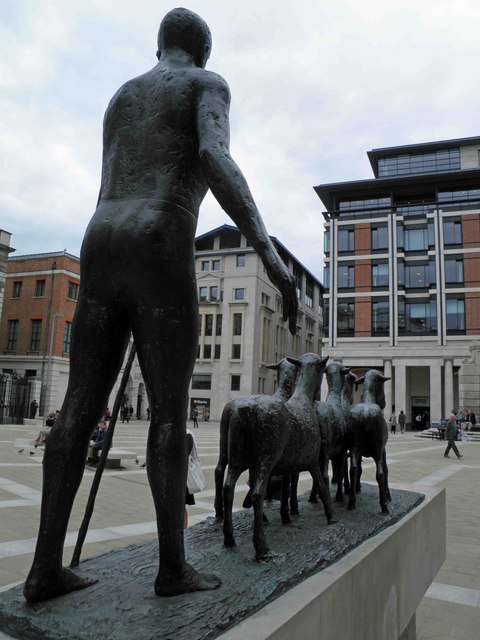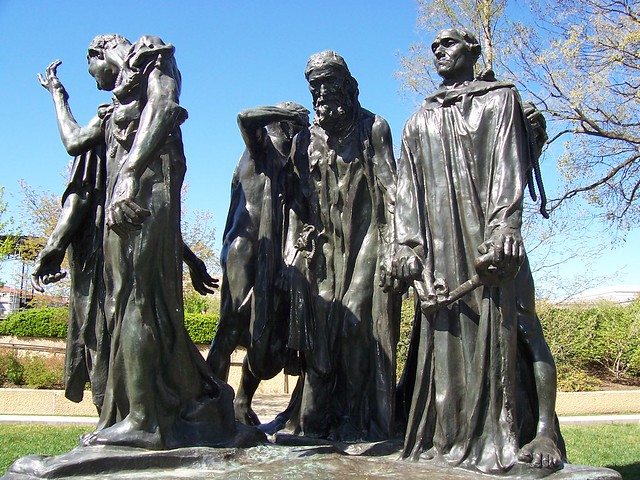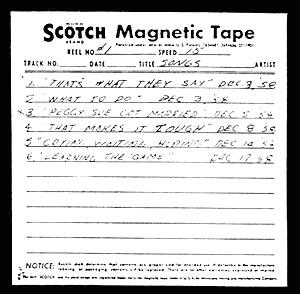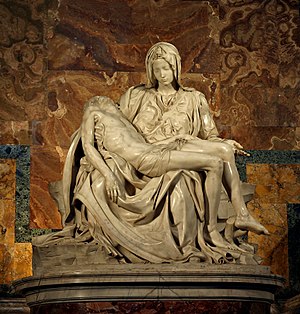
The Definitive Case Against Gay Marriage
By Jack Kerwick
While the flexibility of tradition is among its greatest virtues, and while it permits the absorption of an expansive array of alterations, there are some changes that anticipate its ruination, for there are some ideas and practices that signal a radical departure from the continuity from which any given tradition derives its identity.
In my previous article I stated the arguments for "gay marriage" and exposed the weaknesses within them. Here, I would like to first examine more closely some of the arguments that have been given against "gay marriage," and, upon revealing their defects, state my own case against it.
There are essentially but two fundamental arguments that have been stated against "gay marriage," the first of which appeals to its intrinsic problems, the other to its extrinsic consequences. The former claims that since marriage is an inherently reproductive union, and every homosexual union lacks even the potential for reproduction, it is both biologically and metaphysically impossible for homosexuals to "marry" one another.
This argument undoubtedly possesses an air of plausibility, but in light of the fact that no one today any longer favors withholding from infertile heterosexuals, or even fertile heterosexuals who haven't any desire for children, the right to marry one another, it is increasingly difficult to shake the suspicion that this is only an air. The owners of this argument from reproduction have ready at hand a response to our skepticism: although not in fact, and unlike that which occurs between homosexuals, the sexual intercourse that transpires between infertile heterosexuals and those heterosexuals who prefer not to reproduce is at least reproductive in type. In other words, heterosexual intercourse between couples either incapable of or unwilling to beget offspring is nevertheless marital because while they may not be oriented toward having children, the sexual act itself is. Homosexual activity, in stark contrast, is inherently antagonistic to the end of procreation and, thus, essentially non-marital, or even anti-marital.
While only a mind enslaved by the merciless demands of an ideology could be devoid of all affection for this line of reasoning — both the simplicity and the readiness with which it resonates with the most rudimentary understanding of human biology, coupled by the ease with which it appears to "justify" some of our traditional sensibilities regarding sexual morality make it difficult to entirely ignore — ultimately it must be rejected, for the robustness of the metaphysics by which it's draped and which arrests attention at the outset proves upon closer examination to be its undoing.
The "essence/accident" distinction upon which the argument centrally relies, in spite of its lengthy history and stellar pedigree — in addition to the prominent place it has occupied for centuries within the Christian consciousness, it was first propounded by Plato and Aristotle — is confronted with challenges that it may be powerless to fully surmount. Now is neither the time nor place to unpack all of these difficulties, so I will mention only two of them.
First of all, it is important to recognize that the "essence/accident" distinction presupposes a particular conception of identity that casts just as large a shadow over the history of Western thought as the distinction itself. According to this traditional notion of identity, any given thing is what it is by virtue of retaining the same exact properties over the span of its life. In other words, "identity" equals sameness. So, for instance, in response to the question, "What makes this man the same man today as he was yesterday or last week?" the apologist for this traditional idea of identity will attempt to seize hold of an allegedly immutable property or set of properties possessed by the man under discussion that underlie or sustain the other changes that he experiences over time. "Sameness of soul" is the candidate that has most commonly been submitted for this ostensibly changeless criterion by which a person's identity can be established, but some, like the seventeenth century English philosopher, John Locke, suggested "sameness of memories" as another.
Yet neither of these criteria succeeds in fulfilling the task that's been set for them. Regarding the first, the question remains: "What makes this soul the same soul at one time as at another?" Locke's understanding of personal identity scarcely fares any better, for memories are just as fleeting as anything else in our acquaintance. Furthermore, it engenders insoluble paradoxes like the following. A person is the same person at 50 as he was at 20 because the memories of the one are continuous with those of the other. But at 80 this person may have few if any of the memories of the 20-year old but some of the memories of the 50-year old. So, the 20-year old and the 50-year old are the same person, and the 50-year old and the 80-year old are the same person, but the 80-year old and the 20-year old are not the same person. This means that the 50-year old is the same person as two people which, in turn, means that he both is and isn't identical to either of them!
To complicate matters, various other visions of identity, both of the personal and non-personal sorts, have been submitted over time.
Yet even if we accept this distinction between "essence and accident," we may soon discover that it proves too much. If it is impossible for homosexual intercourse to be marital (and, hence, licit) because it is essentially opposed to reproduction, then it is impossible for all sexual expression between married heterosexual couples beyond conventional intercourse to be marital (and, hence, licit), for only the latter is essentially procreative: mutual masturbation, oral sex, and anal sex, are no less or more immoral when performed by married heterosexuals than when engaged in by homosexuals or, for that matter, prostitutes, porn stars, or anyone else. Contraceptives, then, are also impermissible, for by design they frustrate the end of procreation toward which sexual intercourse is oriented.
This is, in fact, the official Roman Catholic position. There is nothing illogical about it, and on its face it may even seem sound; the point, though, is that there are relatively few people, including Catholics themselves, who endorse it.
But there is another point: once we plunge beneath its face, the suspicion grows that the strength of this position's claims is considerably weaker than the confidence with which they are made. Admitting that sexual intercourse is inherently or essentially oriented toward the end of procreation, why should we accept either that it is the only permissible expression of sexuality or that only when it transpires between married couples is it lawful? The mouth is inherently oriented toward the end of consuming food and drink, we may argue, but this certainly hasn't led anyone to conclude that using it for the purposes of kissing or of eating and drinking when there are no hunger pains to satiate or thirst to quench is morally objectionable. That nature has endowed any of our faculties with specific purposes doesn't mean that morality requires of us that we always employ those faculties just for those purposes. With respect to every area except for that of sexual morality, we seem to recognize this. What, then, accounts for this sole exception?
So, that homosexual activity precludes procreation does not, as far as I can determine, suffice to substantiate the verdict that it precludes a marital union.
The concern that "gay marriage" will discourage heterosexuals from marrying is doubtless a legitimate one, for there is no precedent in all of human history for us to consult while introducing a change of this magnitude in our marital arrangements. Whether the deleterious consequences dreaded will actually materialize, though, no one can know, but given the enormity of the change proposed, the burden is on its advocates to allay their opponents' fears.
That being said, this argument against "gay marriage" fails at least as badly, and quite possibly much worse, than the argument from reproduction. If "gay marriage" has any adverse bearing on heterosexual conduct vis-a-vis marriage, it will be at worst negligible relative to the influence over it exerted by a host of cultural phenomena that have little to nothing to do with homosexuality, practices that even the most ardent defenders of marriage and "family values" don't wish to prohibit.
The allowance of divorce under any set of conditions potentially imperils the sanctity that generations have ascribed to marriage, and the ease with which our laws permit couples to dissolve their marital bonds can't but weaken this institution reducing it to a mere partnership of mutual convenience. While the case against "no fault" divorce has been powerfully made, few Americans today would want to proscribe divorce per se, and most have no difficulty envisioning some kinds of circumstances under which divorce is the only viable option.
The hyper-sexualized nature of all manner of media in our popular culture has immeasurably undermined marriage. From magazines to "romance" novels, from television to film to music, there isn't a single medium that hasn't been "sexualized." Even television news agencies have failed to escape this, as just a casual glance at any of the legions of unfailingly thin and attractive female journalists and commentators readily confirms. "Romantic" films and soap opera dramas promote the notion that unless two people share the intoxicating feeling of being "head over heels" in love, there is something impure and even immoral about their so much as considering marriage, and unless spouses satisfy one another's every desire, they ought to divorce.
The pervasiveness of non-marital co-habitation between sexual partners can also be plausibly interpreted as having left a less than beneficial impression on marriage, but again, few people would be willing to demand that the law be hostile to this arrangement. And, of course, in allowing non-marital co-habitation of sexual partners, we collectively sanction non-marital sex.
In fact, if we as a society were willing to uphold the sanctity of marriage at all costs, then either formally or informally, we would demand of all adults that they be married, for only through such measures could we hope to discourage the sexual promiscuousness that attends the life of so many singles. But not only do we refuse to stigmatize such conduct, in many ways — especially through our media — we (at least implicitly) encourage it.
Inasmuch as marriage is an institution, it is a practice, an activity, or a tradition, as it were. And the identity of any tradition, like the identity of any entity, for that matter, is located in the continuity of its parts. Again, not unlike anything else within our acquaintance, and contrary to the notion of "tradition" that rationalists of various sorts have spared no expense in ensconcing in the modern consciousness, far from being static, inherent in tradition is a dynamism that permits it to accommodate the unexpected changes that ever fluctuating circumstances inevitably throw up. But while the flexibility of tradition is among its greatest virtues, and while it permits the absorption of an expansive array of alterations, there are some changes that anticipate its ruination, for there are some ideas and practices that signal a radical departure from the continuity from which any given tradition derives its identity.
Take the Christian tradition as an example. Over its 2,000-year history, this tradition has continually undergone modifications. Indeed, it is a testimony to its viability as a tradition that it has managed to flourish under such a broad range of disparate circumstances for so long. Yet although it is impossible to provide exhaustive lists of those changes that Christianity can assimilate and those that it cannot, and although even less comprehensive judgments regarding this matter can and have proven to be incorrect, few would disagree that any line of thought that denied a unique role to Jesus in the economy of human salvation has no place within Christian thought. For that matter, the idea that there is no cosmic salvation, or the idea that there is no God, are alike incompatible with Christianity. That is, Christianity cannot assimilate them. No one is going to confuse Confucianism, Buddhism, Islam, or even Judaism with Christianity.
Professional boxing is another illustration of a tradition that, though capable of encompassing a variety of changes while preserving its identity, is clearly not capable of absorbing some without ceasing to be the tradition that it is. From the days of limitless rounds and bare knuckles fighting in which it originated, boxing has remained essentially one and the same sport in spite of having long since prohibited both. Numerous other changes constitute the history of boxing. No longer are there but three standard weight divisions, one single heavyweight championship belt, 15-round contests, and within just the past generation or so, the boxing ring saw the addition of a fourth rope. And I haven't even mentioned the increase in size of the fighters over the years, a change made possible by the dramatic changes in the ways in which boxers are trained.
But while boxing can absorb these changes while remaining one and the same sport, if it were to permit groups of men to rumble in the ring, or men to swing on one another with baseball bats, it would cease to exist, for these are radical changes that, as such, extinguish the identity of the entity to which they occur. Yet the permitting of men and women to battle one another would be no less radical an alteration, for everyone recognizes that, on average, men are physically much larger and stronger than women. The sport of boxing would see its demise if men were allowed to "box" women.
Just as the identity of boxing precludes the accommodation of gender-inclusive bouts, so too does the institution of marriage preclude the accommodation of gender-exclusive unions. To put it another way, the continuity upon which rests the very identity of marriage would be irreparably ruptured if homosexual unions are given the name "marriage," for throughout its extended and storied life, besides the notion of a lifelong commitment that the concept of marriage has been understood as implying, there has been but one other idea that has been the thread uniting the variety of changes that the institution has undergone, and this is the idea that marriage is a heterosexual union.
Requirements to the effect that spouses be unrelated, in love, of the same race, religion, political or economic class, and adults, or that the marital union be monogamous or polygamous, have at various times and places been absent. But at no juncture throughout its millennia-old history has marriage ever been regarded as anything but a sexually diverse practice.
Thus, "homosexual marriage" is a contradiction in terms, for marriage is a tradition or practice that cannot accommodate a change of the magnitude for which proponents of "gay marriage" argue without losing its identity.
That apologists for "gay marriage" believe that by the stroke of a pen, the government can, in essence, "marry" homosexuals, proves the extent to which their thought is dominated by the presuppositions of Enlightenment Rationalism. It is has always been a characteristically Rationalist belief that laws are worth neither more nor less than the paper they are written on. That is, laws are the products of legislators alone, and owe nothing to the customs, affections, sensibilities, habits, and traditions of the peoples who order their lives in accordance with them.
For that matter, opponents of "gay marriage" who decry efforts to "redefine marriage" are similarly rationalistic, for no one can redefine an age-old practice by simply and solely willing to do so via a change in a written law. If a boxing commission today decided to permit gender-inclusive matches, or the use of weapons in the ring, this would no more constitute a genuine "redefinition" of boxing than would our government's decision to regard homosexual relationships as marital constitute a "redefinition" of marriage, for the proposed changes in both instances are incapable of being accommodated by the practices to which they would be added.
The rules and sensibilities of which every tradition is constituted transcend the preferences, tastes, and convictions of their individual adherents. Take a language, for example. A language is a practice or tradition that, as such, is a composition of a richly complex system of rules that, though neither fixed nor finished, and while originating in the utterances of the individuals who speak it, has since transcended their several wishes by achieving a kind of objectivity in motion. Many a change can a natural language assimilate, but it is crucial to recognize that all such changes are gradual and spontaneous, not abrupt and deliberate. Also, such changes arise inadvertently through the mundane, daily, and, hence, un-coordinated interactions of millions of human beings who are unaware of their occurrence; such changes are not imposed upon this largely self-regulating order by third-party elites. Finally, though natural languages, not unlike anything else with which we are familiar, are in a condition of constant flux, there are some changes that no given language can incorporate without impairing its distinctive character.
The definitive case against "gay marriage" is that the practice of marriage can no more accommodate homosexual unions than can the English language accommodate words in Swahili — irrespective of whether the government decides to refer to them by the name "marriage."

 Shepherd and Sheep (1975), Bronze and fibre-glass
Shepherd and Sheep (1975), Bronze and fibre-glass 













 Saint Thomas Aquinas 1225 – 7th March 1274
Saint Thomas Aquinas 1225 – 7th March 1274










![[ARENA]](http://si.wsj.net/public/resources/images/WK-BA636_ARENA_DV_20120119160748.jpg)





 St Mary's College, Strawberry Hill
St Mary's College, Strawberry Hill
 Joan Eardley ... Catterline in Winter
Joan Eardley ... Catterline in Winter Joan Eardley ... Winter Sun
Joan Eardley ... Winter Sun Joan Eardley ... Flood Tide
Joan Eardley ... Flood Tide